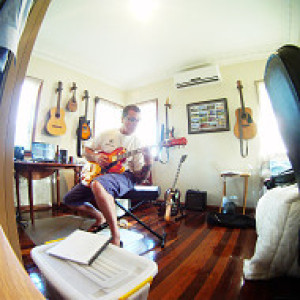The Printing Press (Back End)
Part two of the "My Work" or the "I'm not feeling creative this week" series.
These are the printing presses. The one on the right is a 40 inch and the one on the left a 28 inch. The 40 is 5 colour and the 28 is 6 colour. I will explain that in a bit more detail later.
When I started working here and was pretty new to offset printing I was quite impressed by the size and speed of these machines. I have since seen a web press which print newspapers and one of those would easily take up this whole building. So these are really just babies.
As I said in yesterdays post, when the plates for a job have been made they are taken out to the press. As a general rule, most jobs are 4 colour: Cyan, Magenta, Yellow and Black. These four colours will give you all the spectrum you would need to produce a job, most of the time. Mixing percentages of the 4 colours would give you just about any colour you need. For instance, 100% magenta and 100% yellow makes red or 100% Cyan and 100% yellow makes green, etc, etc. The presses are 5 and 6 colour because quite often a client will want a special colour or Spot Color or maybe a varnish.
The plates are loaded onto the press by wrapping them around a large cylinder on each of the units. When the press is running the information on the plates is transferred onto a impression cylinder and then it is transferred onto the paper. I won't pretend to be an expert at this, but I do know that there are lots of rollers and cylinders on each unit to makes sure that the ink is spread evenly and accurately.
As I said yesterday, the plates are made of aluminium. In a nutshell, the image area on the plate attracts ink and repels water, and the non-image area attracts water and repels ink. That is how the ink doesn't end up smeared everywhere. There are 4 plates to most jobs C,M,Yand K (black).
Quite simply, the stack of paper is loaded at the back end of the printer and when the operator hits the go button, air suckers pick the paper up one sheet at a time and feeds it into the machine. It can do this at an astonishing 15000 sheets an hour.
Yes, there are occasional paper jams! If the machine detects a fault it can go from 15000 to 0 in a second. When that happens there is generally a bit of a bang and we all cringe.
So that is the back end of the printer.
Tomorrow: The front end of the printer.
- 0
- 0
- Canon PowerShot A550
- 1/14
- f/2.6
- 6mm
- 200

Comments
Sign in or get an account to comment.


